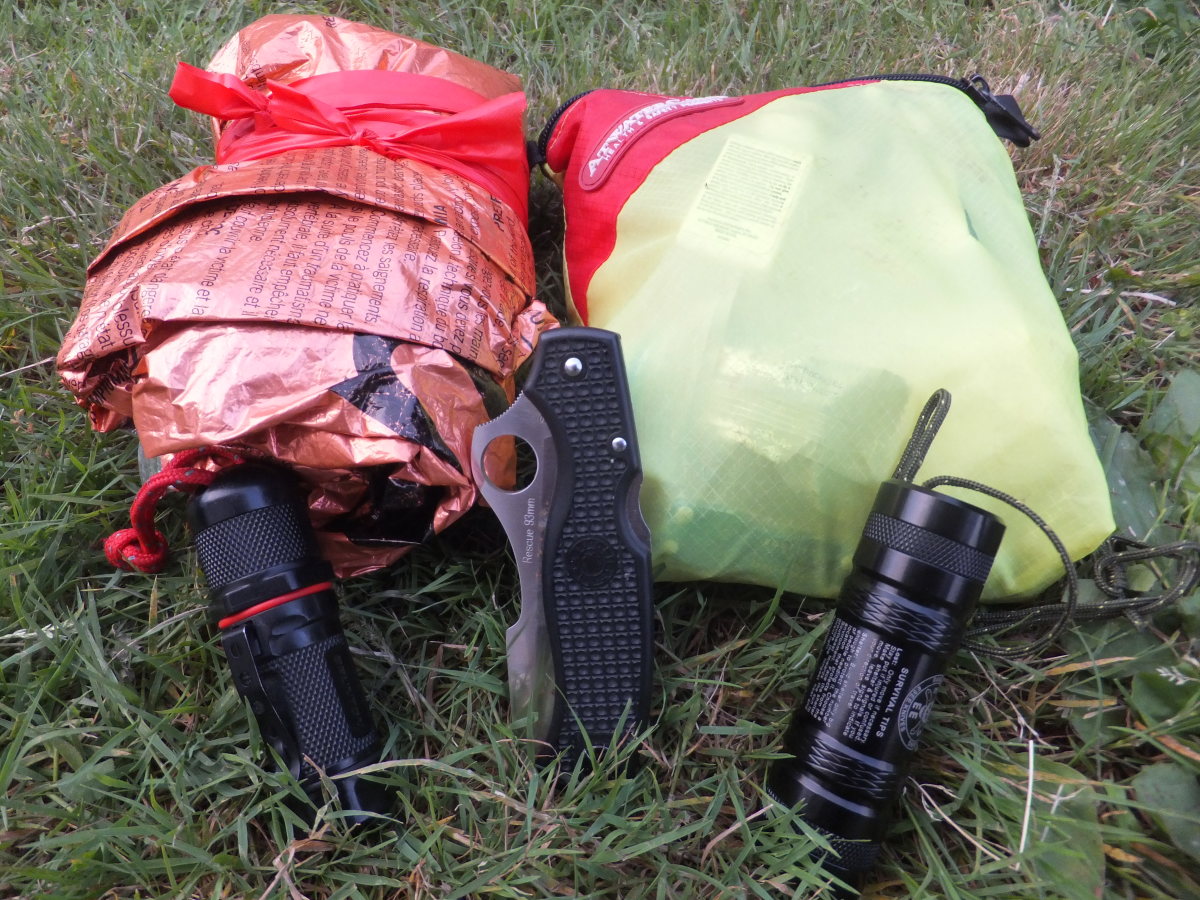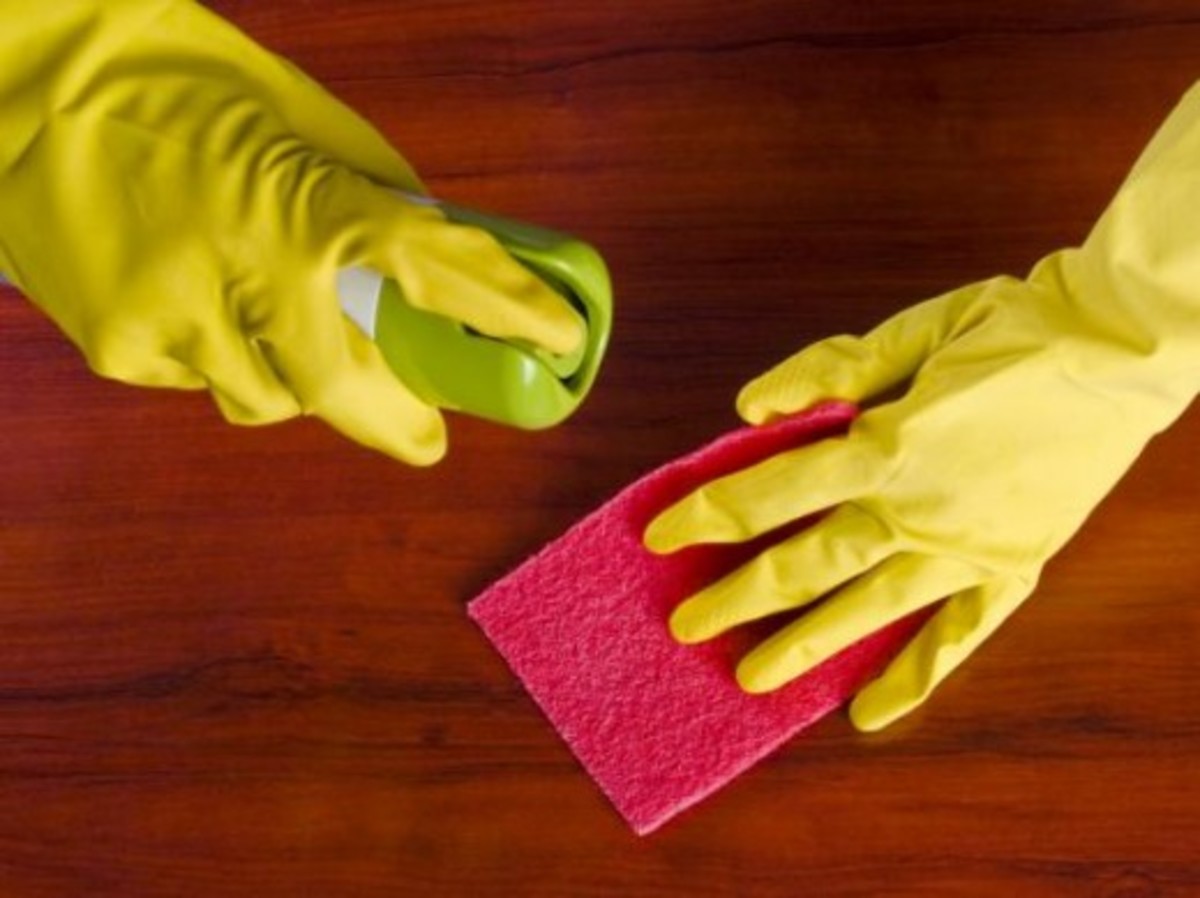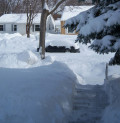Are You Prepared for a Disaster?

Emergency Preparedness - How to Be Prepared to Survive a Disaster
Earthquake, volcano, flood, wildfire, tornado, hurricane, tsunami, terrorist attacks - Disasters are in the news! Tornados in Oklahoma, devastating earthquakes in Japan, New Zealand, Chile and Haiti all remind us that we need to do what we can to prepare for a disaster before one occurs. No matter where you live there is a possibility that your area could be hit by some type of a disaster. When a disaster occurs, it may be necessary to survive on your own for at least 3 days before help arrives from government or disaster relief organizations.
Since I live in an area that is prone to earthquakes, volcanic eruptions, windstorms and floods, I decided it was important to be prepared BEFORE disaster strikes. I learned from attending an emergency preparedness class taught by my local Red Cross chapter that with a little advance planning, you can greatly increase the chances of survival for you and your family. On this page I am sharing what I learned about the steps you can take to prepare before an emergency that will help increase the chances that you and your family will survive a disaster.
(Photo Credit: Courtesy of NOAA - public domain)
How to Prepare for a Disaster - Three Ways for Three Days
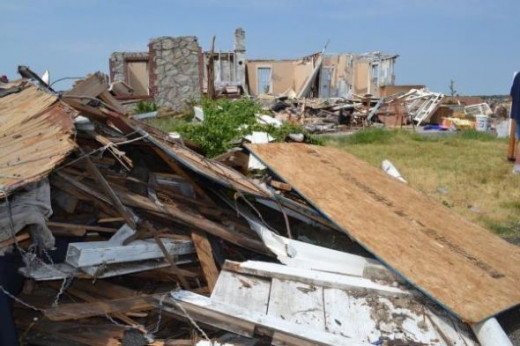
Government agencies and the Red Cross recommend that the best way to prepare for a disaster is to create a plan, have a survival kit with enough essential supplies to survive for at least 3 days and to get involved with others in your community to share resources.
1. Have a Plan
2. Build a Survival Kit or Bug-out Bag
3. Get involved
(Photo Credit: FEMA News Photo - US Government - public domain)
How to Create a Disaster Plan - Make Your Family Disaster Survival Plan
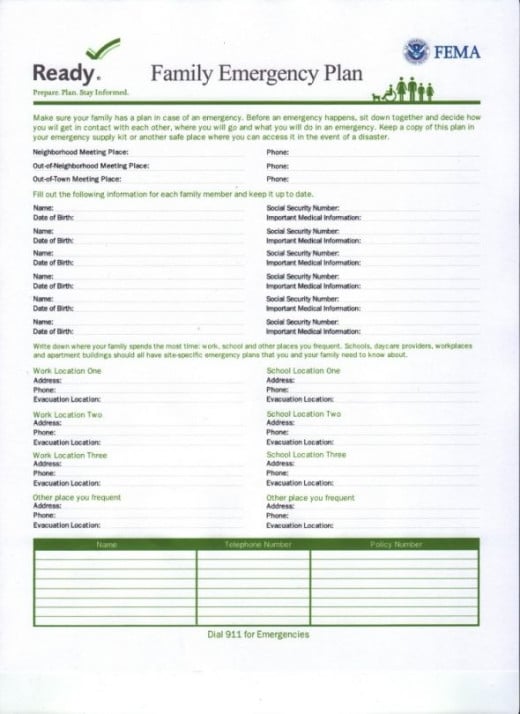
What exactly is a disaster preparedness plan? How can a plan help us during a disaster? A plan is a pre-determined set of action steps that you will take during a disastrous event. As we never know if, or when, a disaster will strike, planning our actions before hand increases our safety, lessens our anxieties during an event, and alleviates some of our fears about disasters.
1. Learn what hazards can cause disasters where you live. Determine your family's needs and how you can survive these hazards. Consider the special needs of others, such as children, the elderly, persons with disabilities and even your pets, in your planning.
2. Develop and practice a communications plan. Would you know what to do if phone lines shut down? Solution: Have an out-of-state contact for family members to call if local lines don't work.
3. Develop and practice an evacuation plan should you need to leave home. Obey evacuation requests and orders issued by local officials. If roads and highways are closed, plan for alternate transportation or where you can seek shelter.
4. If disaster occurs while your family is away from home at work and school, designate a meeting place in case phones are not available.
5. Don't forget about your pets in your plan!
Get started with your family disaster plan using the handy documents on the FEMA website
(Image Credit: FEMA - US Government- Public Domain)
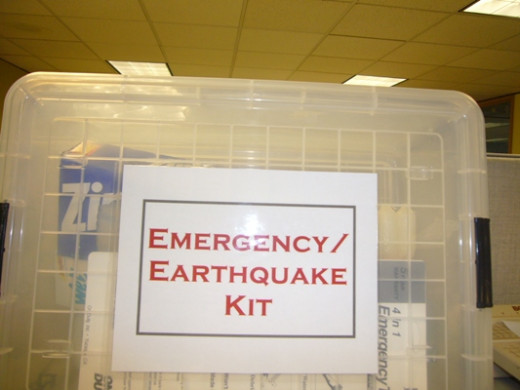
Where will you be when a disaster strikes?
Keep a Survival Kit With You
Since you never know where you might be when disaster strikes, make sure you have an emergency survival kit or bug-out bag with you wherever you might be when a disaster occurs.
1. Your home
2. Where you work
3. In your car
(Photo by VickiSims)
Do You Live Where Tornadoes are Likely to Occur in the US? - Map of US Tornadoes by Fujita Scale in 2013

NOAA has a vast amount of information about tornadoes in the US on their website. This is a map of all of the tornadoes that occurred in the US by F-scale in 2012. NOAA also has a daily forecast maps of where tornadoes and severe storms are likely to occur on their Storm Prediction page. For more information about tornadoes, click here to visit the NOAA Storm Prediction website.
(Photo Credit: NOAA - public domain)
Preparing for a Hurricane - Get Updates From the National Hurricane Center
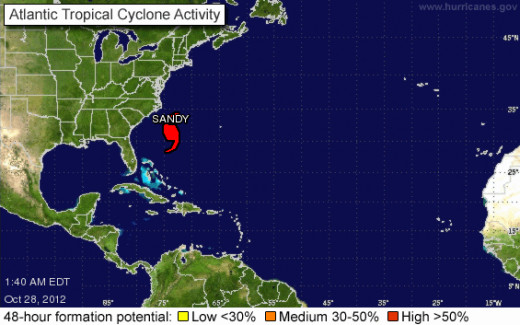
The hurricane season typically starts in June in North America. Hurricanes can cause widespread damage from both the high winds and the storm surge which can often cause severe flooding in coastal areas.This is an example of a map posted on the National Hurricane Center website during the hurricane season. Fortunately, hurricanes like Superstorm Sandy, Hurricane Katrina and Hurricane Irene can be predicted and tracked which makes preparing for a hurricane a little easier. Since emergency supplies often sell out when a hurricane is predicted, it is always preferable to make your plan and put together your survival kit before a hurricane is imminent.
(Map credit: Courtesy of NOAA - public domain)
Links to Hurricane Information - Be Prepared and Aware of Potential Hurricanes
If you live or are visiting in an area that is in danger of being affected by a hurricane, these links are full of helpful information about getting prepared.
- National Hurricane Center
The US National Hurricane Center website includes current storm Information and tracking obtained from satellite, radar and aircraft reconnaissance. - The American Red Cross Hurricane Information
The Red Cross website contains information about preparing for a hurricane as well as getting assistance after a hurricane,
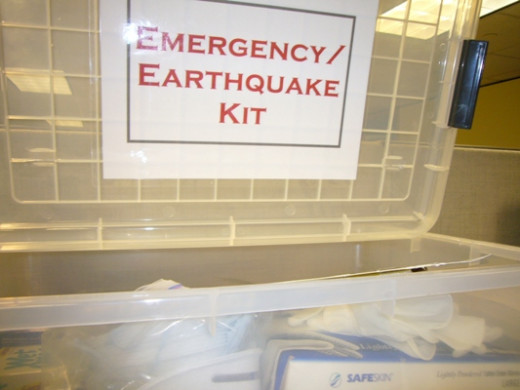
Create a Disaster Survival Kit for Your Home
Survival Essentials for each Family Member
You can build your own kit from scratch or purchase a basic kit and customize by adding necessary personal items for each member of your family. A large plastic box with a lid is an inexpensive, handy container that keeps your supplies together and reaonably safe from damage from water, insects and rodents.
Your survival kit should include the following:
1. Three days worth of non-parishable food - canned goods, dehydrated foods, energy bars and other nutritious snacks
2. One gallon of water per person per day (3 day supply for each person)
3. Battery-operated radio
4. Flashlight
5. Batteries
6. Blanket
7. Extra clothes
8. Sturdy comfortable walking shoes
9, Small first aid kit including, ibuprofen, thermometer, bandages
10 Alcohol-based hand sanitizer
11. Toilet paper & essential personal hygiene items
12. Copies of important documents like passports, birth certificates, phone numbers of family members and friends, bank account numbers, etc.
Don't forget special needs items in your kit like a supply of needed medications for a minimum of three days, an extra pair of eyeglasses or extra cane, surgical mask, and food/water/leash for your pet.
(Photo by VickiSims)
Basic Family Bug-Out Bags and Disaster Survival Kits - Start with these and add personal items for each family member
These convenient pre-made survival kits have all of the basics already assembled in a container, saving the time and inconvenience of finding and putting together all of the items yourself.
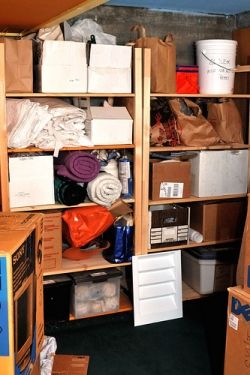
Storing your emergency survival kit
Determining the best place
Store your kit in your home in a place that is safe from the type of disaster you are most likely to face.
For example, if you live in an area that is prone to tornados, store your emergency kit in your storm cellar, basement or the room where you have designated for your family to go that is likely to be safest. If a flood is your major concern, store your kit in a place that is likely to be safely above flood waters.
Keep your kit easily accessible and make sure everyone in your family knows where it is.
(Photo by Orchmid used under creative commons license)
A water purifier can be a lifesaver! - Avoid deadly waterborne diseases
It is recommended that each person have a gallon per day of water. A gallon of water weighs over 8 pounds! After a disaster, water systems can often fail or be contaminated with bacteria, sewage or chemicals. A water purifier removes harmful substances and bacteria, making water safe to drink.
Will you be at work when a disaster strikes? - Be prepared with a personal survival kit at your workplace

For most of us, 30% or more of our day we are at our workplace, so make sure that you have a basic survival kit or bug-out bag for yourself at work including:
1. Food
2. Water
3. Flashlight
4. First aid kit
5. Blanket
6.Cash including change in case you need to use a phone booth
7. Photocopies of important personal documents that are normally in your home - passport, birth certificate, etc.
8. A 3 day supply of any necessary medications
9. Alcohol-based hand sanitizer
10. Essential personal hygiene items
(Photo by Phillie Casablanca used under creative commons license)
Bug-out Bags to Keep at Your Workplace - Compact and handy survival kits to keep in your office
A backpack filled with emergency supplies is compact and handy to have at your workplace. If disaster strikes and you are trapped in the building, need to evacuate or set out on foot to return to your home, you will have the supplies you need with you in this bug-out bag.
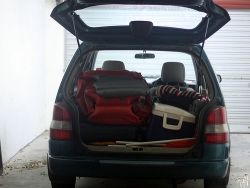
Will you be in your car when a disaster strikes?
Be prepared with an emergency kit in your car
We spend a lot of hours in our car, commuting to and from work, running errands, taking our children to and from their activities or for our vacation travels. In addition to a road emergency kit, keep a survival kit in your car with survival items for your family.
(Photo by Vinnie123- used under a creative commons license)
Some handy kits for your car - Road hazard emergency kits that include a basic survival kit items
Use these kits as a starting point and add some personal items for your family to complete your survival kit for your car.

Make an Emergency Plan for Your Pets
Don't forget your pets in your disaster survival plan!
Animals play an important part in many of our lives. Your pets will require extra planning before a disaster strikes in order to keep them safe during an emergency. Unfortunately, pets are often abandoned when there is a disaster and many are lost or left to die. Regardless of what kind of animals are a part of your family, you should include them in your emergency plans and make sure to set aside the appropriate supplies to keep them comfortable and contained during emergencies.
A checklist of emergency kit for your pets:
1. 3 days worth of food and water (at minimum)
2. Leash and collar or suitable carrier to keep animals safe and in your control
3. Medications and medical records
4. Current photo in case you are separated from your animal
5. Identification tag - be sure that your animal wears one at all times and that the information is current
In the event of an emergency, try your best to keep your animal with you. If you have to evacuate, take your animals with you if at all possible. Unfortunately, most emergency shelters will not allow animals unless they are service animals, so as part of your emergency plan, make arrangements ahead of time about where to go with your animals if evacuation is necessary.
Don't wait until disaster strikes to do your research! Contact out of town friends or family to see if your pet could stay with you in their home and find pet-friendly hotels or contact hotels to see if they allow pets or if their pet policies would be waived in the event of an emergency.
Make a list of boarding facilities and veterinary offices that might be able to shelter animals in emergencies; include 24-hour telephone numbers. Ask your local animal shelter if it provides foster care or shelter for pets in an emergency. Your local animal shelter should be your last resort, as shelters have limited resources and are likely to be stretched to their limits during an emergency.
(Photo by Yukari used under a creative commons license)
Emergency Bug-out Bags for your pets - Keep emergency supplies handy for your pets
These are handy pre-made disaster survival kits for your pets that you can keep with your family survival kits. Or put together your own!

Have an evacuation plan for your pets
Find pet friendly hotels!
As part of your emergency survival plans, find hotels and motels outside your immediate area that are "pet friendly". Ask about any restrictions on number, size and species. Make a list of animal-friendly places and keep it handy. Call ahead for a reservation as soon as you think you might have to leave your home.
(Photo by Guy Sims)
Get involved with Disaster Planning in Your Community - Learn How to be a local Hero or Heroine!

(Photo Credit: FEMA News Photo - US Government - public domain)
After you've completed your own preparations, make sure that you know what resources are available in your area, including agencies and groups that provide safety training.
Be a resource to someone else who may need help preparing.
Remember: during a major disaster we will need to depend on each other since often government and relief organizations may have limited communication and access to a disaster area.
Here are some specific things you can do:
1. Get Trained in CPR and First Aid
2. Help your neighbors and friends to get prepared
Join your local Neighborhood Watch or start one in your area
Offer to help friends and neighbors make their plan - especially the elderly and disabled
3. Get Connected with your Community
Know your local emergency management agencies
Join your local Citizen Corps
Sign up as a volunteer with the Red Cross or other relief organizations
Volunteer with your local search and rescue organization
Want to learn more? - Links to websites with more information
There are a lot of great websites with information that will help you Make Your Plan, Build Your Kit and Get Involved!
- Three Days - Three ways
A King County, Washington website with ideas about creating your plan, building your kit and getting involved. - The Humane Society
The Humane Society website has some great sugestions about how to make sure your pets survive a disaster and how to include them in your disaster plan. - Federal Emergency Management Agency
A fantastic resource for more information with lots of links to other resources. - The American Red Cross
Since its founding in 1881 by visionary leader Clara Barton, the American Red Cross has been the nation's premier emergency response organization. Lots of great information to make your own preparations for a disaster or ways to volunteer and get inv - National Association for Search And Rescue
A website with information about how to get involved with search and rescue and other great links for emergency and survival information.
Are you prepared for a disaster?
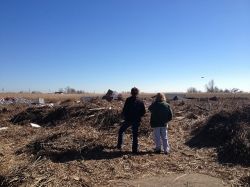
Are you comfortable with the preparations you've made in case of a disaster?
You need not be a squidoo member to leave a comment, but if you would like to sign up and make your own lens - it's easy! Just Click Here to get started!







